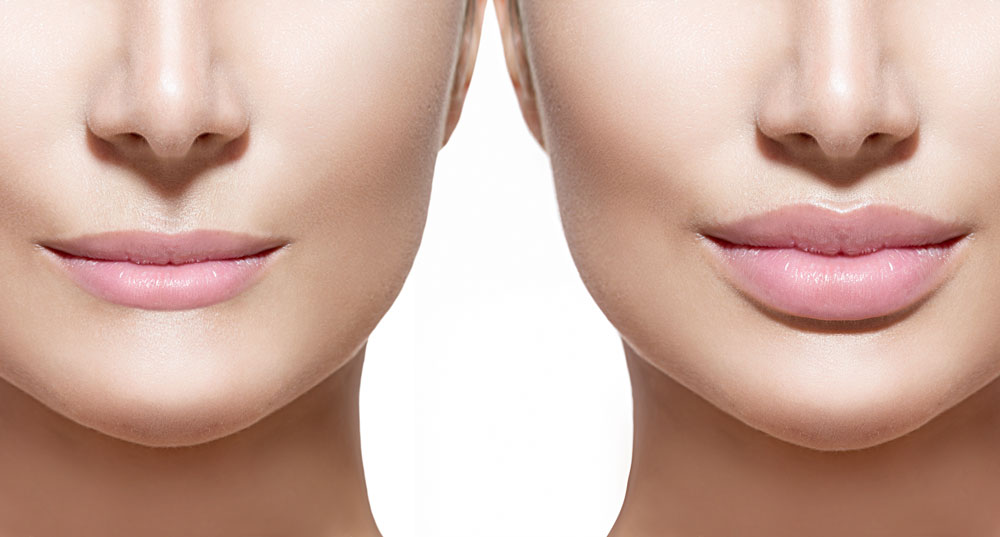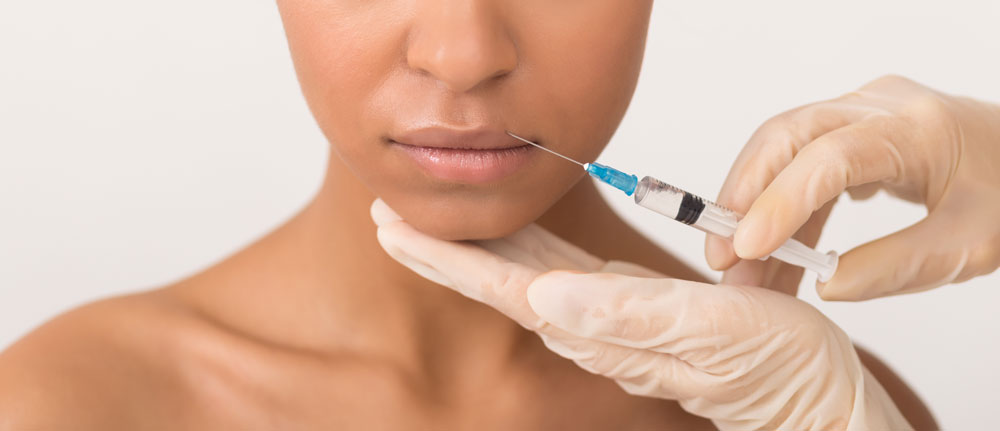Your Complete Guide to Lip Filler

Introduction to lip fillers
Lip fillers are one of the most popular procedures I do in the office. According to the American Society of Plastic Surgeons, 2.6 million filler treatments were performed in 2020. If you’ve ever wondered if lip fillers are right for you, keep reading! In this blog post I’ll give you all the details on what fillers are made of, what to expect during and after your treatment, and what the potential risks are.
What are lip fillers made of?
Fillers used in the lips are composed of hyaluronic acid, a normal structural component of your skin and soft tissue. Hyaluronic acid is soft, pliable, and flexible, which makes it perfect for an area that is in constant motion, such as the mouth. Brand names include Juvederm, Restylane, and RHA (made by Revance). Fillers come in several different formulations, which vary in the amount of structural support and flexibility they provide.
Before your treatment
If you’ve been thinking about getting lip filler, one of the first questions you’ll likely ask yourself is where you should go. The three medical specialties who are specifically trained in fillers during residency are plastic surgery, dermatology, and facial plastic surgery (otolaryngologists who have done extra training in facial aesthetics). You’ll find that many injectors are actually nurses or nurse practitioners, or even physicians in other specialties such as emergency medicine. So who should you trust?
Certainly you want someone who creates the type of results you’re looking for. But you should also consider safety. Although complications from fillers are fairly rare, there are some potentially serious side effects (more on this later). You need an injector who not only can recognize those complications, but knows how to treat them. Asking your injector what they would do for an emergency complication such as vascular compromise – where the filler is blocking blood supply to the skin – will tell you a lot. In my office my injectors are trained to recognize this complication. We also have an emergency kit with everything we would need to treat vascular compromise, and clearly outlined instructions. If you get a less satisfactory answer, or even worse a blank stare, go somewhere else for fillers!
Once you’re found an office you are comfortable with, doing a couple specific things prior to your appointment will ensure you have the best experience possible. First, consider the result you’re interested in. Do you want significantly fuller lips, or just a bit of plumping? Clearly explaining your expectations will help your injector. Second, avoid any medications that could increase your risk of bruising for at least a week prior to your appointment. These include aspirin, ibuprofen, and naproxen. It’s possible to get lip fillers if you’re on a blood thinner such as coumadin, but discuss this with your injector first to see if the risks are worth the benefit.
The cost of lip filler varies by location and how much filler you need, but an average cost is around $600 per 1ml syringe of filler. Some fillers, such as Restylane, come in a 0.5ml size if you just want a little plumping. You will likely need 1-2ml of filler, depending on your goals.

During your lip filler treatment
Getting lip filler can be a bit pinchy, or even painful because the lips are such a sensitive area. In my office we use a topical numbing cream prior to injection to help keep you comfortable. You’ll feel some pinching or pressure during your treatment, but it’s much more comfortable than getting lip filler without any numbing cream (trust me- I’ve tried it on myself with and without the numbing cream). I also like to use some ice just prior to injection. The actual injection takes about 10 to 15 minutes and you’ll see the results immediately. You’ll also have some immediate swelling, so expect your lips to look not quite as full once the swelling resolves.
After your lip filler treatment
We have patients apply an ice pack for a few minutes immediately after their treatment to decrease swelling. I also recommend applying ice again for five minutes later that same day. Your lips will feel a little tender for a couple days. Taking tylenol or motrin can help.
Swelling after lip filler can be a bit dramatic the first couple of days. I personally look like a duck that first day after, and warn my patients to expect a similar response. The swelling starts to improve dramatically around day two, though there may be some trace swelling for a couple weeks after. You will feel some stiffness and maybe some bumpiness until the swelling goes away. This is normal.
You may be able to feel the filler once all the swelling goes down. (Picture me pushing on my own lips as I write this to see what my own lips feel like). There’s a little extra fullness where the filler was injected, but it’s smooth and feels like my own lips, if that makes sense.
Most lip fillers last around 6-9 months. Happily for those that don’t love getting injections, newer products have more lasting power. Restylane Kysse lasts up to a year, and the line of RHA fillers by Revance can last up to 15 months. This longevity is accompanied by a slightly higher price tag, but it’s a great value for not needing to be treated as often!

Risks of getting lip filler
As I mentioned previously, carefully consider the risks before getting filler to make sure it’s the right treatment for you, and that you have an injector you’re comfortable can recognize and treat any potential complications. The most common side effects of lip filler are bruising and swelling which resolve within a few days. If you have any other lumps or bumps that don’t resolve with the swelling, your injector may recommend massaging the area.
What if you don’t like your lip filler? In the vast majority of cases I recommend waiting for your body to break it down. It’s also possible to dissolve filler using hyaluronidase, but I reserve this for cases where there is pain, infection, or another serious problem. This is because the hyaluronidase breaks down your own hyaluronic acid, not just the filler, so it can leave your lips even thinner than prior to injection.
I am often asked what happens if you stop getting filler. The answer is that your lips will gradually return to what they looked like before getting treated. Filler won’t age your lips or deform them (assuming you aren’t the guy on Botched who had something like 20 syringes of filler injected into his lips). I’ve also been asked more recently about filler migration, i.e. whether the filler can move to a different location. It’s actually not a concept I encountered during my training, but it seems to be part of an increasingly popular internet discussion. I looked up the scientific evidence for filler migration, and there’s not much. When people talk about filler migration, they usually mean the filler moving to a different location after the fact. But what I suspect happens based on my years of experience using fillers is that the filler actually diffuses along natural tissue planes at the time of injection. You can see this happening when injecting the lips- while injecting the edge of the lip, called the vermillion border, you can actually see the filler diffuse down into the red part of the lip as well. So I wouldn’t worry about your filler moving around weeks or months down the road.
Finally I want to spend a minute talking about vascular compromise. This is thankfully quite rare, but if filler is accidentally injected into a blood vessel it can cause the skin to die. If this happens into a blood vessel around the eye, it could even cause vision problems or blindness. Vascular compromise isn’t something I’ve ever seen, but it can have devastating consequences if not recognized and treated appropriately. The best thing you can do to minimize this risk is choose your injector carefully. Having a solid understanding of the anatomical planes is critically important to prevent vascular compromise. Knowing how to recognize and treat vascular compromise are the other parts of the equation.
Conclusion
Getting lip filler is generally a very safe procedure with few side effects. It results in fuller lips that last at least 6 months, and even up to 15 months depending on the filler used. Average cost is around $600, and the total visit time is about a half hour, including getting numbed. Although it’s a bit pinchy, we have numbing cream to make it more comfortable. Avoiding ibuprofen, aspirin and naproxen the week before will decrease your bruising. And using ice afterwards can decrease tenderness and swelling. And if you decide to stop getting lip filler, your lips will gradually return to what they looked like before the treatment.
